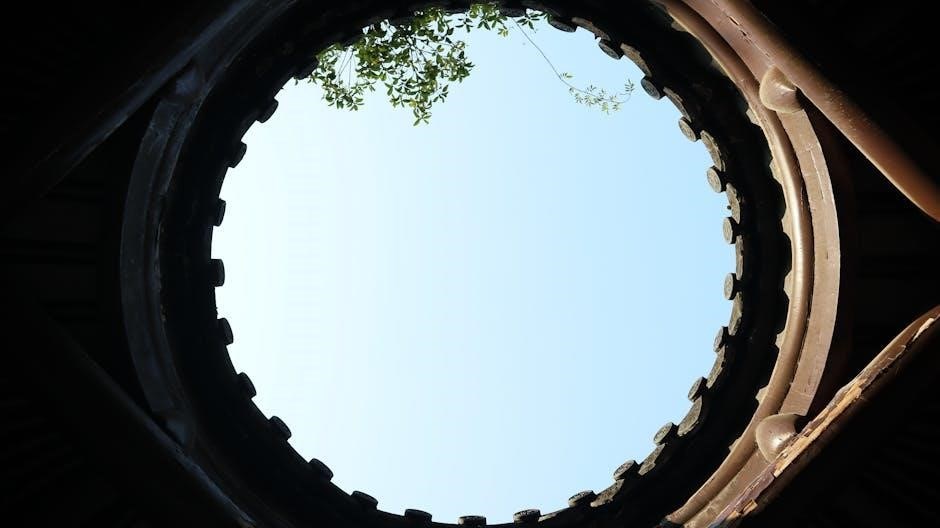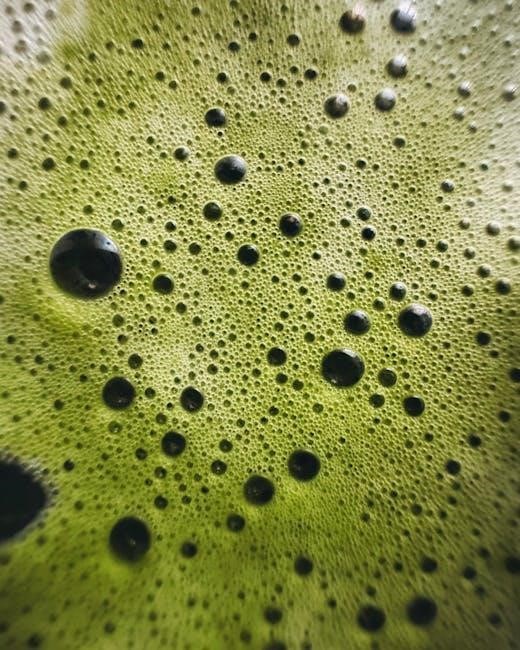circle and circumference worksheets pdf

These printable resources offer focused practice calculating circle area and circumference, ideal for educators. Worksheets help students master these geometric concepts, often utilizing π = 3.14;
Numerous free worksheets are available online, catering to various skill levels and problem-solving approaches, from basic calculations to real-world applications.
Students can reinforce their understanding through diverse exercises, including finding radius, diameter, area, and circumference, enhancing mathematical fluency.
What are Circle and Circumference Worksheets?
Circle and circumference worksheets are educational tools designed to help students practice and solidify their understanding of key geometric concepts related to circles. These worksheets typically present a variety of problems requiring students to calculate the circumference – the distance around the circle – and the area – the space enclosed within the circle.
Often, these resources include diagrams of circles with labeled dimensions, such as radius or diameter, prompting students to apply relevant formulas. Many worksheets utilize π (Pi) as 3.14 for calculations, providing a practical approximation. Available in PDF format, they offer convenient printing and distribution for classroom or home use, supporting diverse learning needs.
These materials range in difficulty, catering to different grade levels and skill sets, from basic identification to complex problem-solving scenarios.
Why Use Circle and Circumference Worksheets?
Utilizing circle and circumference worksheets provides numerous benefits for students learning geometry. They offer focused practice in applying formulas – C = πd and A = πr² – reinforcing mathematical skills through repetition and problem-solving. PDF worksheets are easily accessible and printable, making them a convenient resource for teachers and parents alike.
Worksheets help students develop a deeper conceptual understanding of circles, moving beyond memorization to practical application. They also aid in building proficiency in using π (Pi) and rounding answers to specified decimal places. Furthermore, these resources can be adapted for various learning styles and skill levels, offering differentiated instruction.
Consistent practice with these materials boosts confidence and prepares students for more advanced mathematical concepts.

Understanding Key Concepts
Essential elements include the radius, diameter, and center. Circumference defines the circle’s perimeter, while area measures the space enclosed. Worksheets solidify these definitions.
Defining a Circle: Radius, Diameter, and Center
A circle is fundamentally defined by its center, a single point from which all points on the circle’s edge are equidistant. This constant distance is known as the radius, a crucial component in circumference and area calculations.
The diameter, another key element, represents the distance across the circle, passing through the center; it’s precisely twice the length of the radius. Worksheets often present problems requiring conversion between radius and diameter.
Understanding these relationships is paramount. Visual aids within worksheets frequently highlight the center, radius, and diameter, aiding comprehension. Mastery of these definitions forms the foundation for successfully tackling more complex circle-related problems.
Circumference: The Distance Around a Circle
Circumference represents the total distance around the outer edge of a circle – essentially, its perimeter. Worksheets dedicated to circumference calculations frequently present scenarios involving finding this distance given either the radius or diameter.
Understanding the relationship between circumference and π (Pi) is vital. Exercises emphasize the formula C = πd or C = 2πr, requiring students to apply these formulas accurately. Many worksheets utilize π ≈ 3.14 for practical calculations.
Practice problems often involve rounding answers to specified decimal places, reinforcing precision. Real-world examples, like calculating the distance a wheel travels, enhance the relevance of this geometric concept.
Area: The Space Enclosed Within a Circle
Area defines the amount of two-dimensional space contained within the boundaries of a circle. Worksheets focusing on area calculations challenge students to determine this space, typically given the radius or diameter of the circle.
The core formula, A = πr², is central to these exercises, demanding accurate application of the radius and Pi. Utilizing π ≈ 3.14 is common for simplified calculations, while some problems may require leaving the answer in terms of π.
Practice often includes scenarios requiring students to convert between radius and diameter before applying the area formula. Worksheets also reinforce the concept of units of measurement (e.g., cm², m²).

Formulas for Calculation
Essential formulas underpin circle calculations: C = πd or C = 2πr for circumference, and A = πr² for area. Worksheets emphasize their correct application.
Mastering these equations is crucial for solving problems involving circles, utilizing π’s value (approximately 3.14) for accurate results.
Circumference Formula: C = πd or C = 2πr
The circumference, representing the distance around a circle, is calculated using two equivalent formulas: C = πd, where ‘d’ signifies the diameter, or C = 2πr, where ‘r’ denotes the radius. Worksheets consistently present problems requiring students to apply these formulas effectively.
Understanding the relationship between diameter and radius (d = 2r) is key to seamlessly transitioning between the two formulas. Practice exercises often involve scenarios where either the radius or diameter is provided, necessitating the appropriate formula selection.
Many worksheets instruct students to use 3.14 as an approximation for π, simplifying calculations while maintaining reasonable accuracy. Successfully applying these formulas builds a foundational understanding for more complex geometric concepts. Consistent practice reinforces formula recall and problem-solving skills.
Area Formula: A = πr²
Calculating the area of a circle, the space enclosed within, relies on the formula A = πr², where ‘r’ represents the radius. Worksheets frequently present problems requiring students to square the radius before multiplying by π. This emphasizes the importance of order of operations.

A strong grasp of squaring numbers is crucial for accurate area calculations. Many exercises involve providing the radius and asking students to determine the area, reinforcing the formula’s application. Using π ≈ 3.14 simplifies computations for introductory levels.
Worksheets may also present problems where the area is given, requiring students to work backward to find the radius. Mastering this formula is fundamental for understanding more advanced geometric concepts and real-world applications involving circular shapes.
The Value of Pi (π) and its Approximation (3.14)
Pi (π) is a mathematical constant representing the ratio of a circle’s circumference to its diameter, an irrational number continuing infinitely without repeating. Worksheets commonly utilize 3.14 as an approximation of π for simplified calculations, especially in introductory exercises.
Understanding that 3.14 is an approximation is important; some worksheets may later introduce more precise values or leave answers in terms of π. Students learn to substitute 3.14 into formulas for circumference and area, gaining practical application skills.
Exercises often require rounding answers to specified decimal places, reinforcing number sense. Worksheets help students connect the abstract concept of π to concrete calculations, building a foundational understanding of circular geometry.

Types of Circle and Circumference Worksheets
Diverse worksheets exist, focusing on circumference only, area only, or combining both. Some present real-world problems, while others involve missing values for practice.
Worksheets Focusing on Circumference Calculation
These worksheets specifically target the skill of determining a circle’s circumference. They typically present problems where students are given either the radius or the diameter of a circle and are tasked with calculating the circumference using the formulas C = πd or C = 2πr.
Many worksheets include problems requiring students to round their answers to a specified number of decimal places, reinforcing practical mathematical skills. Some also feature circles with labeled diagrams, aiding visual learners. Variations include problems presented in word format, requiring students to extract relevant information before applying the formula.
Increasing difficulty can involve more complex scenarios or requiring conversions between different units of measurement. These focused exercises build a strong foundation for understanding circumference and its applications.
Worksheets Focusing on Area Calculation
These dedicated worksheets concentrate on mastering the calculation of a circle’s area. Problems generally provide the radius or diameter, challenging students to apply the formula A = πr² to determine the enclosed space. Visual aids, like diagrams of circles, are frequently included to enhance comprehension.
Worksheets often progress in difficulty, starting with straightforward calculations and progressing to problems requiring students to first solve for the radius given the diameter, or vice versa. Rounding answers to specific decimal places is a common requirement, promoting precision.
Some worksheets present area problems within real-world contexts, such as finding the area of a circular garden or a pizza. These exercises solidify understanding and demonstrate the practical application of the area formula.
Combined Worksheets: Circumference and Area
These versatile worksheets challenge students to calculate both the circumference and area of circles, often within the same problem. They require a thorough understanding of both formulas – C = πd (or C = 2πr) and A = πr² – and the ability to apply them correctly based on the given information.
Problems typically provide either the radius or diameter, demanding students to calculate both measurements. Some worksheets introduce scenarios where students must solve for one measurement to then calculate the other, enhancing problem-solving skills.
Combined worksheets often include comparative questions, asking students to determine which is larger – the circumference or the area – for a given circle. These exercises promote a deeper conceptual understanding of these geometric properties.

Solving Problems with Worksheets
Worksheets present diverse problems, requiring students to apply formulas. They practice finding circumference using radius or diameter, and area with given dimensions, building proficiency.

Finding Circumference Given the Radius
When provided with a circle’s radius, worksheets challenge students to utilize the circumference formula: C = 2πr. This involves multiplying the radius by two and then by the value of pi, commonly approximated as 3.14.
Numerous exercises present varying radius values, requiring students to accurately apply the formula and calculate the corresponding circumference. Some worksheets may ask for answers rounded to a specific decimal place, enhancing precision.
Practice includes identifying the radius within word problems and extracting the necessary information to perform the calculation. Mastering this skill is fundamental for solving more complex geometric problems and real-world applications.
Worksheets often include visual aids, such as diagrams of circles with labeled radii, to support understanding and reinforce the concept.
Finding Circumference Given the Diameter
Worksheets focusing on diameter-based circumference calculations utilize the formula C = πd. Students are presented with the diameter of a circle and tasked with multiplying it by pi (π), often using the approximation 3.14, to determine the circumference.
These exercises build upon the foundational understanding of the relationship between diameter and radius – that the diameter is twice the length of the radius. Problems vary in complexity, ranging from straightforward calculations to those embedded within word problems.
Students practice extracting the diameter from problem statements and applying the correct formula. Emphasis is placed on accurate calculations and appropriate rounding of answers to specified decimal places, promoting numerical fluency.
Visual representations of circles with labeled diameters are frequently included to aid comprehension and reinforce the concept.
Finding Area Given the Radius
Worksheets designed for radius-based area calculations center around the formula A = πr². Students are provided with the radius of a circle and instructed to square it, then multiply the result by pi (π), commonly approximated as 3.14, to calculate the area.
These exercises reinforce the understanding that area represents the two-dimensional space enclosed within the circle’s boundary. Problems progress in difficulty, starting with simple numerical substitutions and advancing to more complex scenarios.
Students practice accurately squaring the radius and performing the subsequent multiplication, developing computational skills. Worksheets often include units of measurement, requiring students to express the area in appropriate square units.
Diagrams depicting circles with clearly labeled radii are frequently incorporated to enhance visual learning and conceptual understanding.
Finding Area Given the Diameter
Worksheets focusing on area calculation from the diameter require an initial step: determining the radius. Students recall that the radius is half the diameter (r = d/2) before applying the area formula, A = πr². This two-step process reinforces the relationship between diameter and radius.
These exercises build upon prior knowledge of the area formula and introduce a practical application of division. Problems vary in complexity, ranging from straightforward calculations with whole numbers to those involving decimals.
Students practice accurately dividing the diameter by two and then squaring the result before multiplying by pi (π ≈ 3.14). Worksheets emphasize the importance of correct order of operations.
Visual aids, such as diagrams of circles with labeled diameters, are often included to support comprehension and minimize errors.
Advanced Worksheet Applications
Complex problems integrate circle concepts into real-world scenarios, like painting walls or designing circular gardens. Worksheets also explore missing value challenges.
Students analyze relationships between area and circumference, solving for unknowns and deepening their mathematical understanding.
Worksheets Involving Real-World Scenarios
These worksheets bridge the gap between abstract concepts and practical applications, enhancing student engagement. Imagine calculating the amount of fencing needed to enclose a circular garden – a common scenario! Or determining the area a sprinkler waters, assuming a circular spray pattern.
Problems might involve finding the circumference of a wheel to calculate distance traveled, or determining the area of a circular pizza to estimate cost per slice. Students could also tackle scenarios like designing circular tables or calculating the material needed for circular rugs.
These applications demonstrate the relevance of circle geometry in everyday life, fostering a deeper understanding and appreciation for mathematics. Worksheets often present these problems with realistic units and contexts, preparing students for future challenges.
Worksheets with Missing Values (Radius, Diameter, Circumference, Area)

These worksheets present a unique challenge, requiring students to apply their knowledge of circle formulas in reverse. Instead of calculating area or circumference directly, students must determine a missing dimension – the radius, diameter, or even pi itself!
For example, a worksheet might provide the circumference and ask students to calculate the radius. Or, it could present the area and challenge them to find the diameter. This fosters critical thinking and problem-solving skills, moving beyond rote memorization.
These exercises reinforce the relationships between the different properties of a circle, solidifying understanding. Students must strategically choose the appropriate formula and manipulate it to isolate the unknown variable, building algebraic reasoning.
Worksheets Exploring the Relationship Between Area and Circumference
These advanced worksheets delve into the interconnectedness of a circle’s area and circumference, moving beyond independent calculations. Students are presented with scenarios where knowing one value allows them to deduce the other, fostering a deeper conceptual understanding.
Problems might ask, “If the circumference of a circle doubles, what happens to its area?” or “Given the area, determine a possible circumference.” These questions require students to analyze how changes in one dimension impact the other.
Such exercises emphasize that while area measures the space within the circle and circumference measures the distance around it, they are intrinsically linked through the constant π, solidifying a holistic grasp of circle geometry.

Resources for Printable Worksheets
Numerous websites provide free, downloadable circle and circumference worksheets in PDF format. Mathworksheets4kids.com and WorksheetCloud are excellent starting points for educators and students.
Mathworksheets4kids.com — Circle Area Worksheets
Mathworksheets4kids.com offers a comprehensive collection of circle area worksheets, readily available as PDF downloads. These resources cater to diverse skill levels, ranging from basic identification of circle components to complex calculations involving radius, diameter, and Pi.
Worksheets include exercises focused on finding the area of a circle given its radius or diameter, and conversely, determining the radius or diameter when the area is provided. Many worksheets incorporate visual aids, enhancing comprehension for visual learners.
Furthermore, the site provides worksheets that integrate real-world scenarios, challenging students to apply their knowledge to practical problems. Answer keys are conveniently included, facilitating self-assessment and efficient grading. The variety and accessibility of these PDF worksheets make Mathworksheets4kids.com a valuable resource for educators and students alike.
WorksheetCloud: Grade 7 Mathematics — Circumference & Area of Circles
WorksheetCloud provides a dedicated section for Grade 7 Mathematics, specifically focusing on circumference and area of circles, available as downloadable PDF worksheets. These resources are designed to align with the Grade 7 curriculum, offering targeted practice in calculating these key geometric properties.
The worksheets present a variety of problems, including finding circumference given radius or diameter, and calculating area using the appropriate formulas. Many exercises require students to utilize π (Pi) and round answers to specified decimal places, reinforcing precision.
WorksheetCloud’s platform also offers interactive features and detailed solutions, aiding student understanding. The PDF format ensures easy printing and accessibility, making it a convenient tool for classroom use or independent study. It’s a robust resource for mastering circle measurements.
Free Printable Circle Worksheets Online
Numerous websites offer free printable circle worksheets in PDF format, catering to diverse learning needs. These resources typically include exercises focused on calculating both circumference and area, often with varying levels of difficulty. Many worksheets provide diagrams of circles with labeled dimensions, prompting students to apply relevant formulas.
Common exercises involve finding the radius, diameter, or circumference when given other measurements, and calculating the area using π (Pi), often approximated as 3.14. Some worksheets incorporate real-world scenarios, enhancing practical application.
These online resources are invaluable for teachers and parents seeking supplementary materials to reinforce circle geometry concepts. The PDF format allows for easy downloading, printing, and distribution, supporting flexible learning environments.

Tips for Using Worksheets Effectively
Ensure students understand units of measurement and rounding instructions. Always encourage checking solutions and verifying answers, utilizing PDF worksheets for practice.
Understanding the Units of Measurement
Consistent unit application is crucial when working with circle and circumference worksheets. Students must recognize if dimensions are provided in centimeters, meters, inches, or feet. Incorrect unit conversions will lead to inaccurate calculations of both circumference and area.
PDF worksheets often present problems with mixed units, requiring students to convert before applying formulas. For example, a radius given in meters needs conversion to centimeters if the desired answer is in centimeters. Emphasize the importance of clearly labeling all answers with the correct units (cm, m, in, ft, cm2, m2, in2, ft2).
Reinforce that circumference represents a linear measurement, hence units like cm or m, while area represents a two-dimensional space, requiring squared units like cm2 or m2. Careful attention to units builds a solid foundation for more complex geometric problems.
Rounding Answers to Specified Decimal Places
Circle and circumference worksheets frequently require answers rounded to a specific degree of precision, often one or two decimal places. PDF formats clearly state the required rounding, ensuring consistency in student responses. Explain that rounding isn’t simply truncating digits; it involves considering the next digit.
If the next digit is 5 or greater, the preceding digit increases by one; otherwise, it remains the same. Emphasize the importance of following instructions precisely, as incorrect rounding can lead to point deductions. Practice with various examples, reinforcing the rounding rules for both circumference and area calculations.
Highlight that using π (pi) in calculations often results in non-terminating decimals, necessitating rounding to the specified place value. Accuracy and attention to detail are key skills developed through these exercises.
Checking Your Work and Solutions
Utilizing circle and circumference worksheets (PDF versions) provides opportunities for self-assessment. Encourage students to meticulously review their calculations, verifying each step for accuracy. Suggest working backward – using the calculated circumference to find the radius, or vice versa – as a validation method.
Many worksheets include answer keys, allowing for immediate feedback and identification of errors. Emphasize that finding a mistake isn’t a failure, but a learning opportunity. Comparing their solutions with the answer key helps students understand where they went wrong and reinforces correct procedures.
Promote a habit of double-checking units of measurement and ensuring answers are reasonable within the context of the problem. Consistent self-checking builds confidence and solidifies understanding.
Mastering circle concepts, aided by worksheets (PDF format), builds a strong geometric foundation. Consistent practice with area and circumference enhances problem-solving skills and mathematical literacy.
The Importance of Mastering Circle and Circumference Concepts
A solid grasp of circle and circumference principles is fundamental in mathematics, extending far beyond simple calculations. These concepts are integral to understanding more complex geometric shapes and spatial reasoning. Utilizing circle worksheets (PDFs) provides focused practice, reinforcing these vital skills.
Real-world applications are abundant, from engineering and architecture to everyday tasks like measuring circular objects or calculating the amount of material needed for circular designs. Proficiency in these areas enhances problem-solving abilities and critical thinking.
Worksheets offer a structured approach to learning, allowing students to progress at their own pace and identify areas needing further attention. Consistent practice builds confidence and mathematical fluency, setting a strong foundation for future studies.